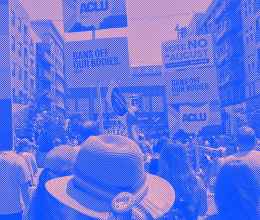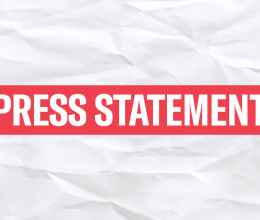Origins
SLAPP suits existed long before the term “SLAPP” was coined. The oldest cases that would now be considered SLAPP suits involved the right to petition the government. In fact, some commentators believe the origins of the right to petition the government to resolve grievances goes back as far as the 10th century.1 There is a clear nexus between our First Amendment’s right to petition clause, and the Bill of Rights previously exacted by William and Mary in the 17th century.2 Years later, the Declaration of Rights and Grievances emerged as an outgrowth of the Stamp Act in 1765, and included the right to petition the King and Parliament.3
In the United States, SLAPP suits date back to the earliest years of our country when citizens were sued for speaking out against government corruption. Perhaps the earliest SLAPP suit in our country’s history arose in 1802 in Harris v. Huntington.4 This case involved five Shaftsbury, Vermont citizens who petitioned the state legislature against reappointing Harris as a county justice of the peace, claiming he was a “quarreling, fighting, and Sabbath-breaking member of society…[with] a wicked heart.” Harris brought suit against the citizens for libel and sought $5,000 in damages. Although expressing some concerns about the truthfulness of the citizens, the court upheld their right to petition and dismissed the case. Numerous similar cases filed throughout the 1800s met a similar fate.
With the rise of political activism in the 1960s and 1970s, suits to suppress speech became a popular tool to stifle those perceived to be obstacles or a threat. It was not until the 1980s that University of Denver Professors George W. Pring and Penelope Canan officially coined the term “SLAPP” to describe these cases.5 Over the years, SLAPP suits have grown from an unnamed nuisance into a serious threat to freedom of speech and participation in the political process.
Laying the Groundwork for Modern-Day SLAPP Suits
There are two important cases that established the Noerr-Pennington Doctrine, which lays the groundwork for modern-day SLAPP suits. In general, the Noerr-Pennington Doctrine exempts individuals from liability due to attempts to petition or otherwise influence the government, as long as the activities are not a sham to cover up a mere attempt to interfere with a competitor’s business.
In 1961 the U.S. Supreme Court was faced with an early incarnation of the modern-day SLAPP suit in Eastern Railroad Presidents’ Conference v. Noerr Motor Freight, Inc.6 The case involved a contentious fight for market share between the railroad and trucking industries. The railroads engaged in an intense marketing campaign against the trucking companies, which the latter viewed as an attempt to destroy the trucking companies as a competitor.
Specifically, the truckers accused the railroads of persuading the governor of Pennsylvania to veto the Fair Truck Bill. The truckers filed suit claiming the defendants violated the Sherman Act by conspiring to restrain trade and monopolize the long-distance freight business. The Supreme Court held that mere attempts to influence the passage or enforcement of a law did not constitute a violation of the Sherman Act, even if multiple parties were involved. The Supreme Court rightfully saw that that the Sherman Act could not be used to restrict the right to petition, so long as it was not a sham to conceal an actual attempt to interfere with a competitor’s business relationship.
Laying the Groundwork - read more ↕
A few years later, the Supreme Court elaborated on their Noerr decision. In United Mine Workers v. Pennington, small coal mine operators brought suit against large coal mines and the union for conspiring to drive them out of business.7 The small coal mines argued that the large coal mines and the union were lobbying federal agencies to increase the minimum wage and to restrict the government’s purchase of coal to only those companies that were able to pay the higher wages.
Relying on Noerr, the Supreme Court held that, although the intention was to eliminate their competition, the “sham” exception did not apply, and thus, the large coal mines and the union did not violate the Sherman Act.
Almost a decade later, the “sham” exception created by the Noerr-Pennington doctrine was finally applied. In California Motor Transport v. Trucking Unlimited, a trucking company was repeatedly thwarted in its efforts to expand its business by established truckers who filed objections to the new trucking company’s applications for necessary licenses.8 The Supreme Court concluded that the repeated objections were baseless and constituted an obvious attempt to block another petitioner’s “meaningful access to the adjudicatory tribunals,” or its First Amendment right to petition the government, which ultimately deprived the government of its role in the decision-making process.9
The Noerr-Pennington Doctrine Meets the Media
In Sierra Club v. Butz, the Sierra Club filed a lawsuit to stop logging activities.10 The defendant in the case then filed a counterclaim, alleging that the Sierra Club was seeking to force a breach of contract and interfere with their business relationship.
The Supreme Court had never ruled on this specific issue. However, it had ruled on the interaction of other First Amendment rights and common law tort actions – actions resulting from a wrongful act which caused injury – specifically as they apply to the media.
Noerr-Pennington Meets the Media - read more ↕
In New York Times Co. v. Sullivan and related cases, the Supreme Court held that the guarantees of free speech and freedom of the press amount to a constitutional defense in defamation actions.11 In simple terms, this means that unless the speaker is knowingly making false statements or acting without regard to whether he is speaking the truth, he is not liable for defamation. Without evidence of this “sham,” any claim of common law malice is irrelevant.12
By combining the New York Times defamation standard and the Noerr-Pennington doctrine, the court concluded that the right to petition the government for redress of grievances cannot be determined by the presence or absence of malice, because “the malice standard invites intimidation,” and because “malice is easy to allege.”13
As a result, the court held that there can only be liability in common law tort when the petitioning activity is a sham, i.e., when the “real purpose is not to obtain governmental action, but to otherwise injure the plaintiff.”14
In a case known as Protect Our Mountain Environment v. District Court, the Colorado Supreme Court made a decision that has provided a useful standard for determining whether to grant summary judgment in a tort claim filed in response to petitioning activity.15
The Court held that in cases like this, the burden of proof shifts to the plaintiff to show “that the primary purpose of the activity was to harass the plaintiff or accomplish some other improper goal, and that the activity had the capacity to adversely affect a legal interest of the plaintiff.”16
The Noerr-Pennington Doctrine and Civil Rights Claims
In 1982, in Nat’l Ass’n for the Advancement of Colored People v. Claiborne Hardware Co., the Supreme Court applied the Noerr-Pennington doctrine to a civil rights case.17 Here, the NAACP instituted an economic boycott in Claiborne, Mississippi to pressure the city council to adopt anti-discrimination laws. The local hardware store was one of several white-owned businesses that sued the NAACP and other activists for business interference and asked for $3,000,000 in damages. Not surprisingly, the jury rendered a verdict in favor of the hardware store and granted it $3,500,000 in damages. Even less surprisingly, the Mississippi Supreme Court affirmed this ruling. However, the U.S. Supreme Court struck down the lower courts’ rulings by applying the Noerr-Pennington doctrine to determine that the indirect petitioning of private businesses through boycotts was constitutionally protected activity.
Limiting the Sham Exception
More recently, in City of Columbia v. Omni Outdoor Advertising Inc., two competing billboard companies were involved in an anti-trust case.18 Omni Outdoor Advertising was trying to establish itself in the Columbia, Georgia market. Columbia Outdoor advertising, an established local firm, tried to keep Omni out of the market by persuading a friendly city council to pass restrictive ordinances, by giving free billboard space to select city officials, and by spreading lies about Omni.
In an opinion that broadly restricted the “sham” exception, the Supreme Court adopted an “outcome versus process” test. This test limited the “sham” exception to those cases in which “persons use the governmental process—as opposed to the outcome of that process”—as a “weapon.”19 Under this test, if a SLAPP suit seeks a governmental result (such as legislation, ruling, etc.), then it must be dismissed.
References:
1. George W. Pring and Penelope Canan, SLAPPs: Getting Sued for Speaking Out, pg. 15 (Temple University Press 1966)(citing “Andover Code” of Edgar the Peaceful; see D. Smith, The Right to Petition for Redress of Grievances: Constitutional Development and Interpretations, pgs.12-13, 45 (1971) (unpublished dissertation, Texas Tech University)).
2. J. Nussbaum and Steven S. Weil, SLAPP: The First Amendment and Community Association Politics, available at www.berding-weil.net/pdf/SLAPP_article.pdf. (citing Bill of Rights, 1 William and Mary, Sess. 2, Ch. 2 (1689))
3. J. Nussbaum and Steven S. Weil, SLAPP: The First Amendment and Community Association Politics, available at www.berding-weil.net/pdf/SLAPP_article.pdf. (citing McDonald v. Smith, 472 U.S. 479, 105 S. Ct. 2787, 86 L. Ed. 2d 384 (1985)).
4. 2 Tyler 129 (Vt. 1802).
5. George W. Pring and Penelope Canan, SLAPPs: Getting Sued for Speaking Out, pg. 3 (Temple University Press 1966).
6. 365 U.S. 127 (1961).
7. 381 U.S. 657 (1965).
8. 404 U.S. 508 (1972).
9. Id. at 512.
10. 349 F. Supp. 934 (U.S. Dist. Ct. 1972).
11. See 376 U.S 254 (1964).
12. Sierra Club v. Butz, 349 F. Supp. 934, 937 (U.S. Dist. Ct. 1972).
13. Id. at 938.
14. Id. at 939.
15. Protect Our Mountain Environment, Inc. v. District Court of County of Jefferson, 677 P.2d 1361 (1984).
16. J. Nussbaum and Steven S. Weil, SLAPP: The First Amendment and Community Association Politics, pg. 6, available at http://www.berding-weil.net/pdf/SLAPP_article.pdf. (citing Protect Our Mountain Environment, Inc. v.District Court of County of Jefferson, 677 P.2d 1361, 1369 (1984)).
17. 458 U.S. 886 (1982).
18. 499 U.S. 365 (1991).
19. George W. Pring and Penelope Canan, SLAPPs: Getting Sued for Speaking Out, pg. 27 (Temple University Press 1966)(citing City of Columbia v. Omni Outdoor Advertising Inc.499 U.S. 365, 380 (1991)).
DISCLAIMER – The information on this website is not, nor is it intended to be, legal advice. The information regarding SLAPP suits is meant to provide the public with general information as part of our on-going educational efforts. Every case depends on the specific facts and circumstances involved. To submit a complaint for review, please go to our Need Legal Help page. Do not wait for a response from us. Your problem may have a deadline for legal action. Seek help from an attorney immediately. We may contact you for further information.







